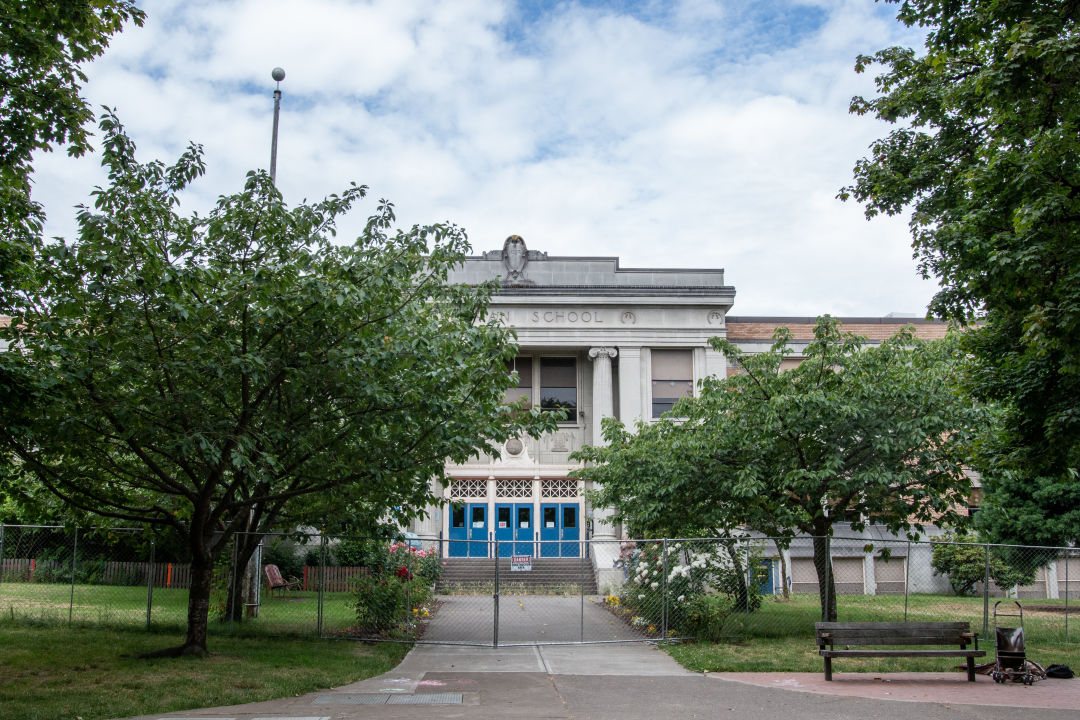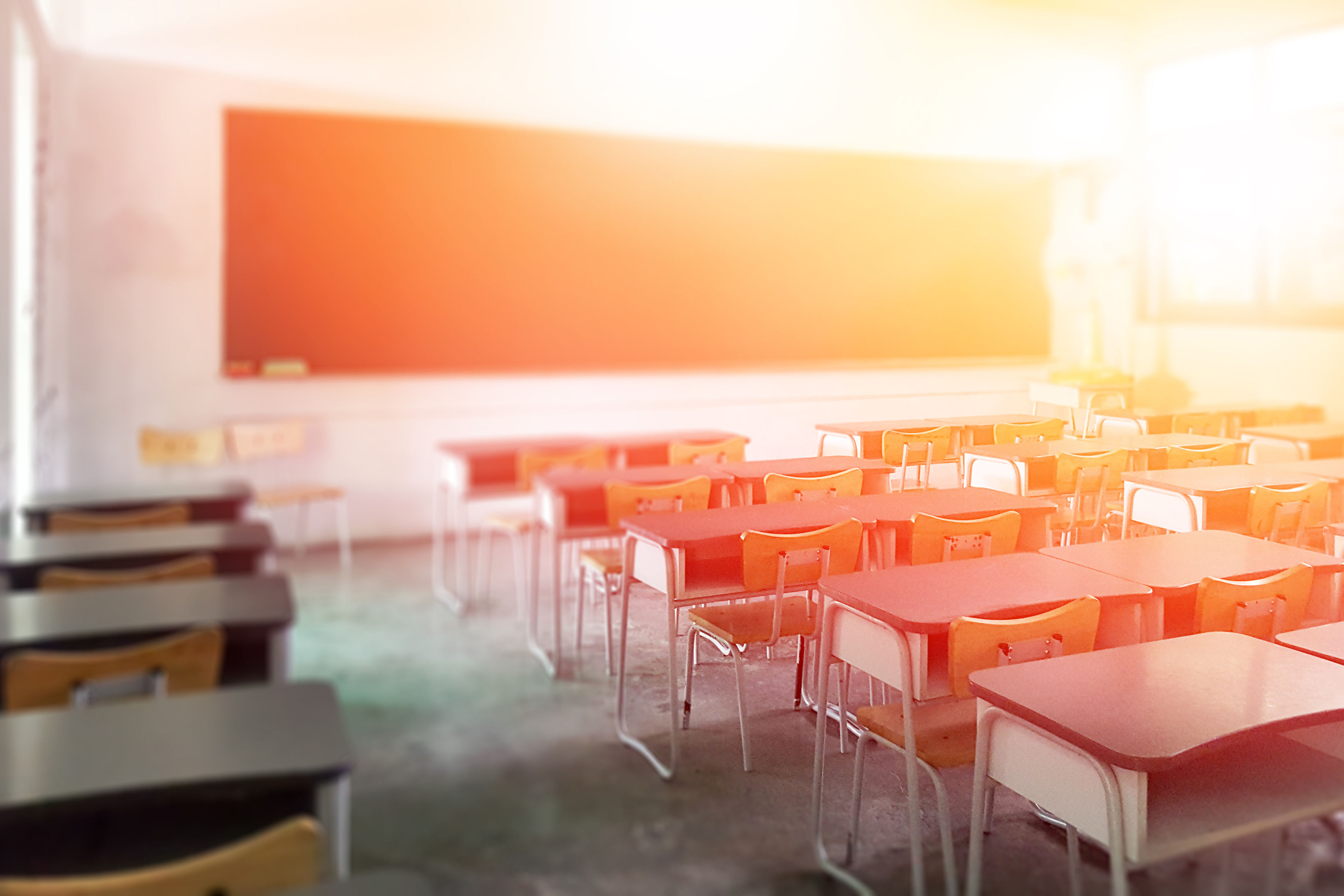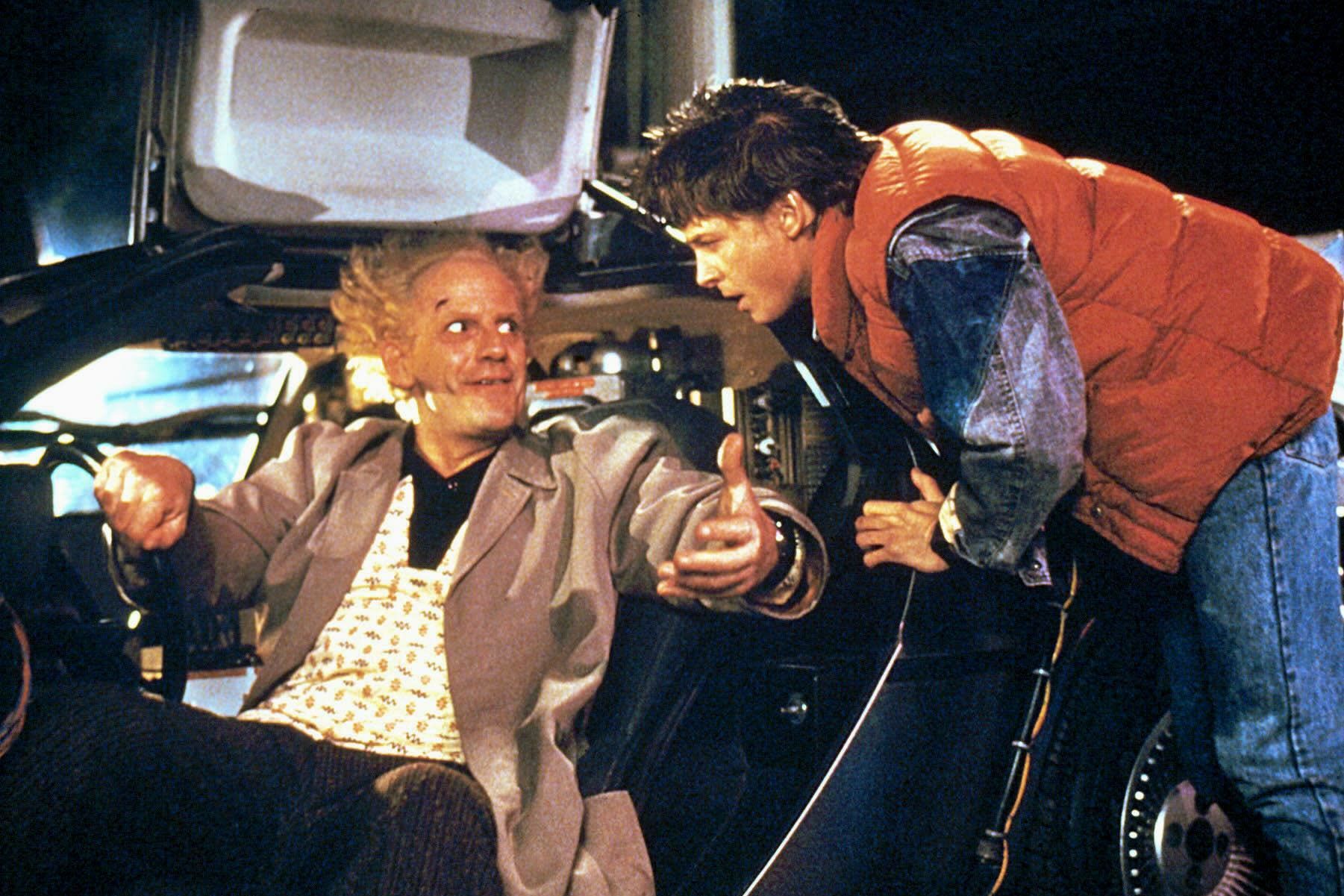As Coronavirus Cases Continue to Rise in Oregon, Hopes Dim for In-Person School

The Portland Association of Teachers is signaling that unless school leaders and politicians can come up with a plan to stop the virus, educators do not feel it’s safe to return to the classroom this fall. (Pictured: Chapman Elementary School in Northwest Portland)
Image: Gabriel Granillo
In early June, exhausted from two months of a seat-of-the-pants distance learning effort and with coronavirus infection rates very low around Oregon, teachers and parents alike were hopeful that in-person school could resume, in some fashion, in the fall.
But in the six weeks since, case counts have spiraled in Oregon and around the United States. And now, the state’s largest teachers union is signaling that unless school leaders and politicians can come up with a plan to stop the virus in its tracks—in essence, a Hail Mary that could magically turn Portland into New Zealand—educators do not feel it’s safe to return to the classroom this fall.
“If educators, students, and families cannot be reasonably assured that any plans for re-opening schools will prevent the spread of Covid-19, re-opening is the wrong choice,” Portland Association of Teachers president Elizabeth Thiel wrote in a letter to her membership this week. “Despite the pressure and the desire to get back to normal, we cannot sacrifice the safety of educators, students, and families by accepting re-opening plans that leave us all at risk.”
In an interview with Portland Monthly, Thiel, a high school English teacher, was even more blunt. No one, she says, is suggesting that 500 people go back into office buildings—why should schools be any different? And most office buildings, she notes, have advantages Portland’s aging fleet of school buildings do not, such as updated HVAC systems and touchless sinks. That’s of particular concern given Thursday’s long-anticipated acknowledgment by the World Health Organization that people who spend long periods inside in crowded settings without adequate ventilation are at higher risk of infection.
Portland Public Schools has yet to announce a firm plan of action for the upcoming school year, though in a recent message to parents the district seemed to nod to the inevitability of distance learning for the foreseeable future, saying it was “committed to providing the best possible learning experiences for our students, regardless of delivery model.”
The district is under enormous and sometimes competing pressures, including from frantic working parents.
President Trump waded into the fray in a big way this week, threatening via Twitter to pull federal funding from schools that don’t open for in-person learning this fall. Meanwhile, the national Council of Chief State School Officers has estimated that schools would need between $158 billion and $244 billion to open safely, complying with guidelines on social distancing. The Democrat-controlled US House passed legislation in May to appropriate a fraction of that—$58 billion—to schools, but the Republican-controlled Senate has not acted on that. So far, schools have received $13.5 billion in direct stimulus funds from the federal government, according to the New York Times.
Thiel says the conversation among local teachers shifted in particular when news broke in late June of a COVID-19 outbreak at a KinderCare center in Lake Oswego. Outbreaks at child care facilities, some of which remained open during the pandemic with safety guidelines in place, have been relatively rare, but news of an outbreak so close to home gave many teachers pause.
In a survey of PAT members, Thiel says, 40 percent indicated they themselves are at high risk for complications were they to contract COVID-19, or live with someone who is; many teachers also have their own children at home. To that end, she says, Portland—and other school districts—should focus on professional development around distance learning, which last spring was patchy at best, given inequitable access to technology, the varying availability of parents to support kids at home, and individual teacher comfort levels with technology.
“We have the opportunity to do (distance learning) better, or more thoughtfully, with an eye for equity and knowing what worked and what did not work in the spring,” Thiel says. “Schools can open once the virus is under control and is not being spread.”




